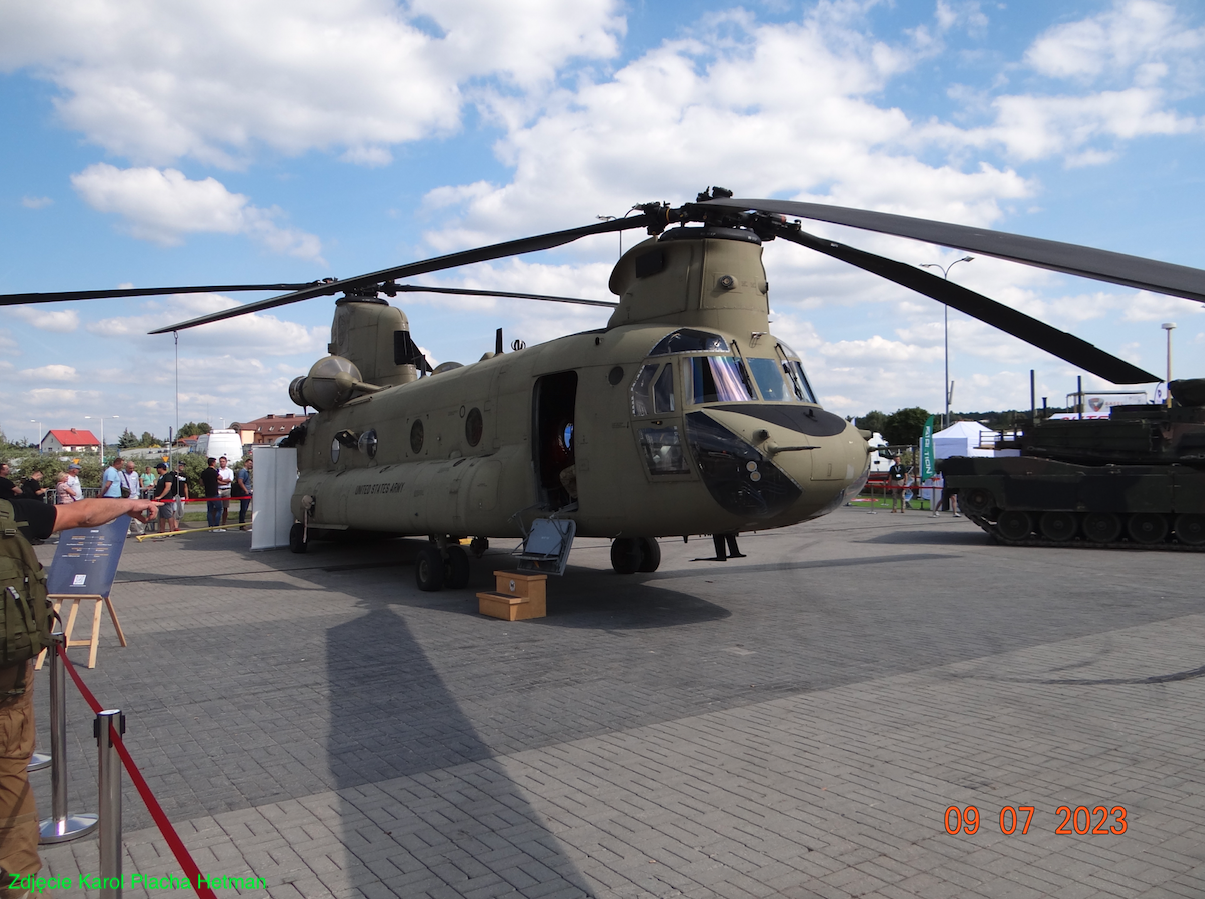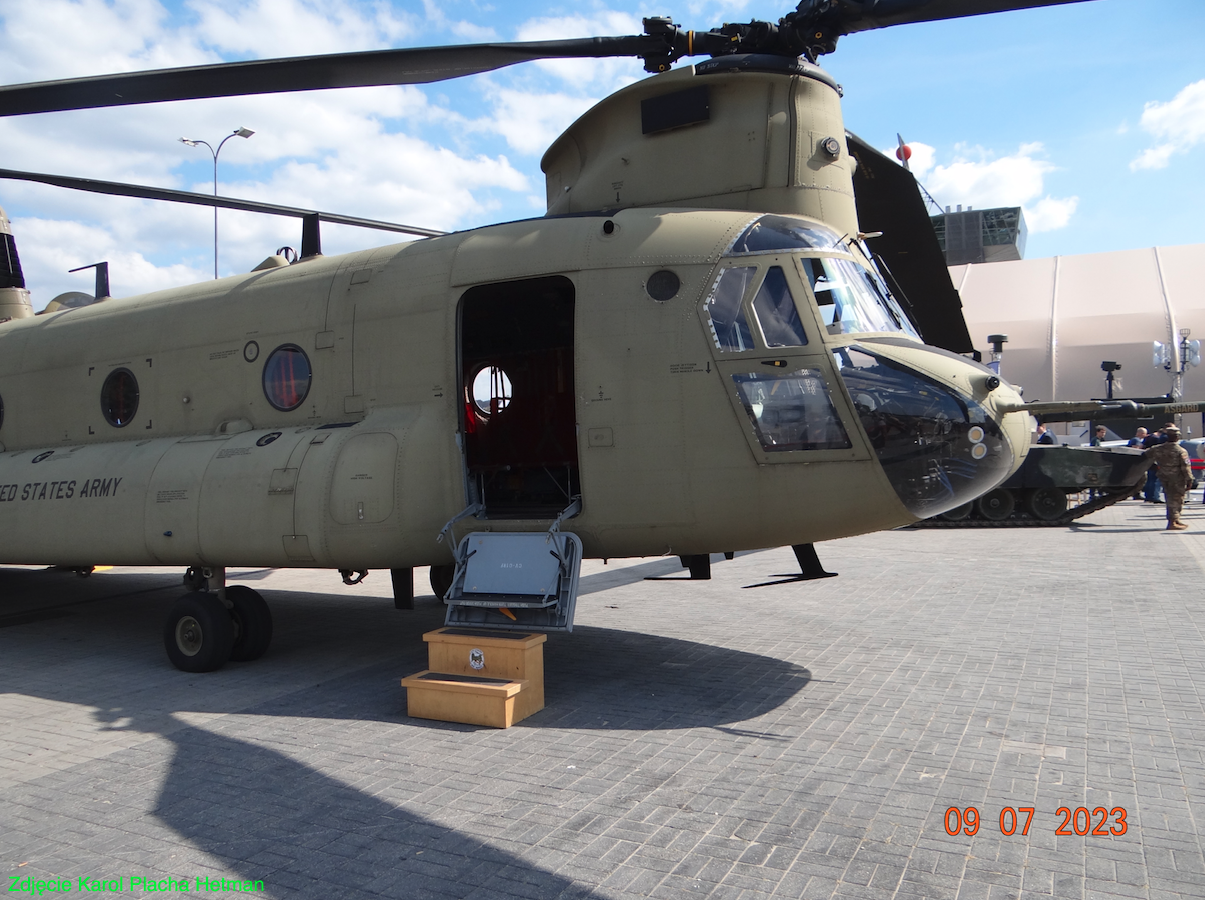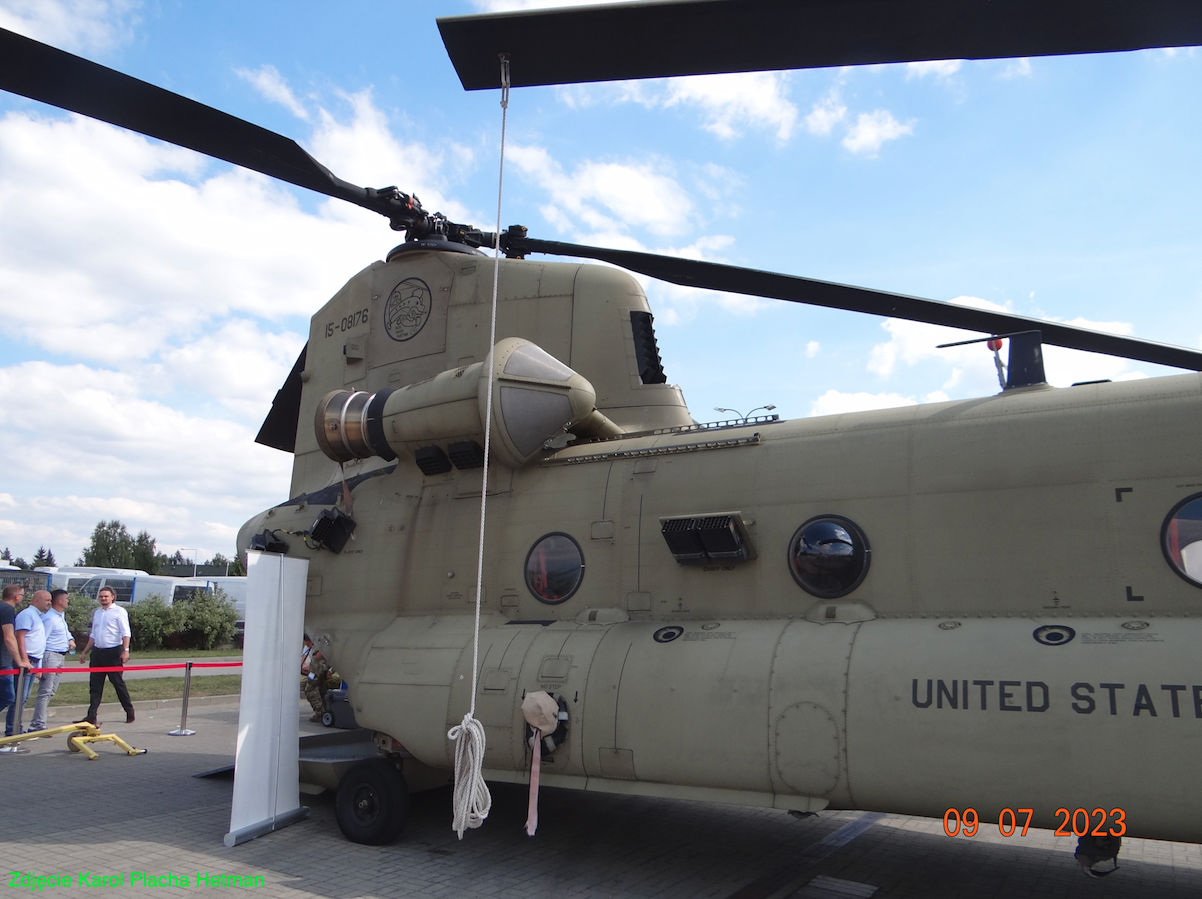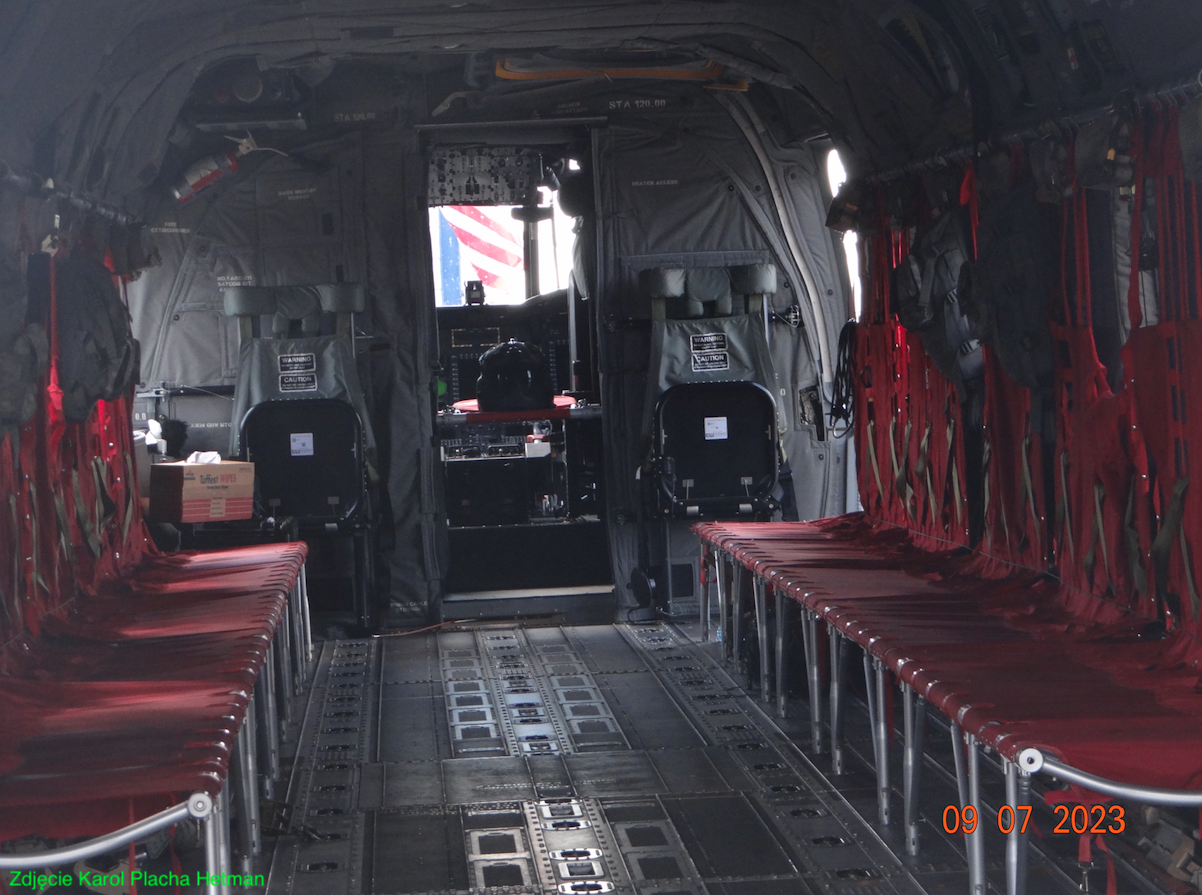Kielce 2023-09-09
Boeing Vertol CH-47 Chinook transport helicopter.
The Boeing CH-47 Chinook is a heavy military transport helicopter. The prototype made its first flight on September 21, 1961. In 1962, the helicopter was introduced into service and is currently (2023) still in operation. By 2012, over 1,200 units were produced. The Boeing CH-47 Chinook helicopter is in service with: USAF, RAF, Japan, Australia, Canada, Taiwan, Egypt, Greece, India, Indonesia, Iran, Italy, South Korea, Libya, Morocco, Netherlands, Saudi Arabia, Singapore, Spain, Turkey, United Arab Emirates, Vietnam.





Boeing CH-47 Chinook is a helicopter with a tandem rotor (two rotors one behind the other), developed by the American company Vertol and manufactured by Boeing Vertol. Chinook is a helicopter with a high capacity, one of the heaviest helicopters in the world and one of the fastest in flight. The name, "Chinook", comes from the Native American Chinook of Oregon and Washington.
History of construction.
The Chinook helicopter was originally designed by Vertol, which in 1957 began work on a new tandem rotor helicopter, designated the Vertol Model 107 or V-107. At the same time, the United States Department of the Army announced its intention to replace the Sikorsky CH-37 Mojave helicopter, which was powered by a piston engine, with a new gas turbine-powered helicopter. In June 1958, the American Army ordered several V-107 helicopters from Vertol, under the designation YHC-1A. After the tests, the army assessed that the helicopter was too heavy for attack missions and too light for transport missions. But the helicopter, designated YHC-1A, was ordered by the United States Marine Corps as the CH-46 Sea Knight. The USAF ordered an enlarged V-107 helicopter, designated Vertol Model 114. The helicopter was designated YCH-1B and made its first flight on September 21, 1961. It entered service in 1962.
In 1962, the USA changed the designations of military aircraft structures (structures used in the Marine Corps, USAF and US NAVY were combined into one system of markings) and as a result, the HC-1B helicopter received the new designation CH-47A.
The Boeing CH-47 Chinook helicopter turned out to be very fast. Maximum speed was 170 knots (200 mph; 310 km/h). The helicopter was by far the fastest among helicopters developed in the 1960s. In the following years, the helicopter was systematically modernized. In 1982, improved engines, composite rotor blades, a cockpit redesign (to reduce crew workload), improved electrical systems and avionics, and an advanced flight control system were introduced. The helicopter has been in service for over 60 years and, like the B-52 bomber and the Lockheed C-130 Hercules transport, are icons of USAF aviation. The latest generation of the mainstream design is the CH-47F, which features several significant maintenance-reducing improvements, digital flight controls, and is powered by two 2 x 4,733 hp (2 x 3,529 kW) Honeywell engines.
The civilian version of the helicopter, designated Boeing Vertol 234, is used by civilian operators not only for passenger and cargo transport, but also for air firefighting and to support the timber, construction and oil extraction industries.
Boeing CH-47 Chinook design.
The Boeing CH-47 Chinook helicopter received a large cargo bay that takes up most of the helicopter's fuselage. A large loading ramp was installed at the rear of the helicopter. Additionally, there are entrance doors in the front of the fuselage, on the right and left sides of the helicopter. Transported loads can also be suspended on a sling with a hook under the helicopter.
The CH-47 helicopter is powered by two Lycoming T55 turboshaft engines, mounted on both sides of the rear pylon of the machine and connected to the rotors by drive shafts. The initial models were equipped with engines with a power of 2 x 2,200 HP (2 x 1,600 kW) each. Counter-rotating rotors eliminate the need for a vertical counter-torque rotor, allowing all power to be used for lift and thrust. The ability to adjust the lifting force in each rotor makes it less sensitive to changes in the center of gravity, important when lifting and lowering a load. When hovering over a specific location, a twin-rotor helicopter has increased stability compared to a single-rotor when weight is added or subtracted. For example, during a parachute landing or detaching a suspended load.
Drive.
2 Lycoming T55-GA-714A turbine engines, 2 x 4,733 HP (2 x 3,529 kW). The failure of one of the engines does not cause the helicopter to fall because the second engine has such excess power that further flight is possible.
Data T-T Boeing CH-47F Chinook Chinook:
Crew: 3 people (2 pilots and a loadmaster or aircraft engineer). The cargo hold can accommodate 55 parachute jumpers. Length 98 ft (30 m). Hull length 52 ft (16 m). Hull height 12 ft 5 in (3.78 m). Total height 18 ft 11 in (5.77 m). Curb weight 24,578 lb (11 48 kg). Maximum weight 50,000 lb (22,680 kg). Main rotor diameter 60 ft (18 m). Maximum speed 170 kn (196 mph, 315 km/h). Cruising speed 160 kn (184 mph, 296 km/h). Range 400 nmi (460 mi, 740 km). Operating ceiling 20,000 ft (6,100 m). Rate of climb 1,522 ft/min (7.73 m/s).
Written by Karol Placha Hetman
